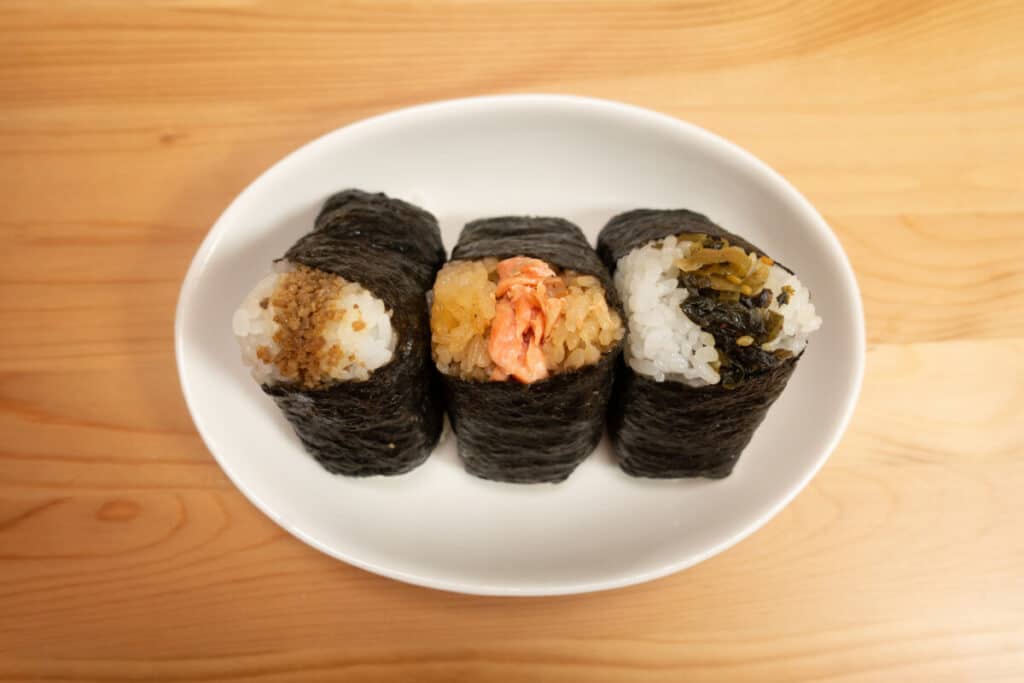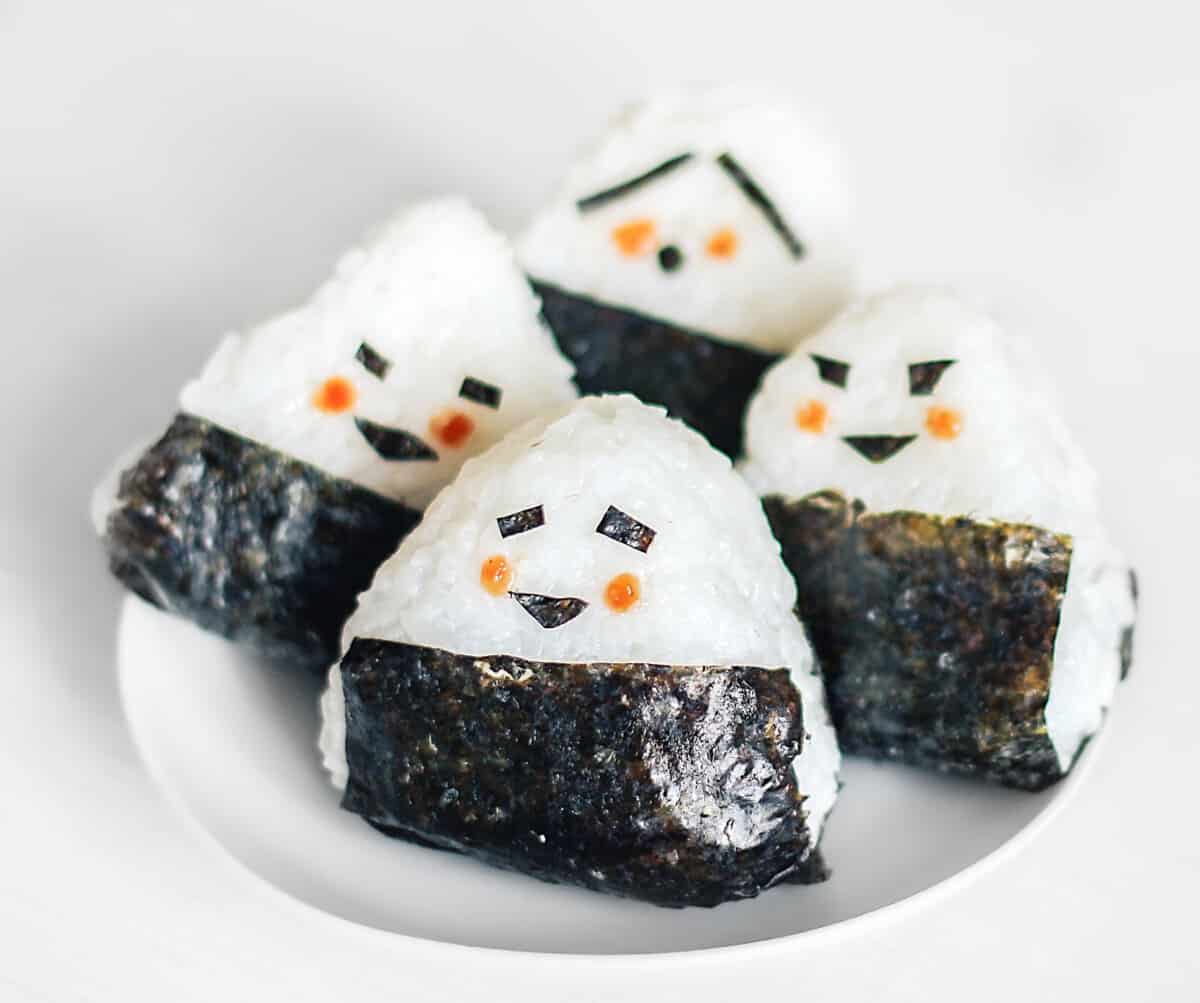The portable, hand-sized, and tasty onigiri are a staple of Japanese cuisine. These rice balls can be packed full of various ingredients, from fish to fruit.
Depending on your desire, many recipes can make your onigiri creating experience even more enjoyable. Japanese rice balls may appear professional-grade cuisine but believe it or not, making onigiri is relatively easy.
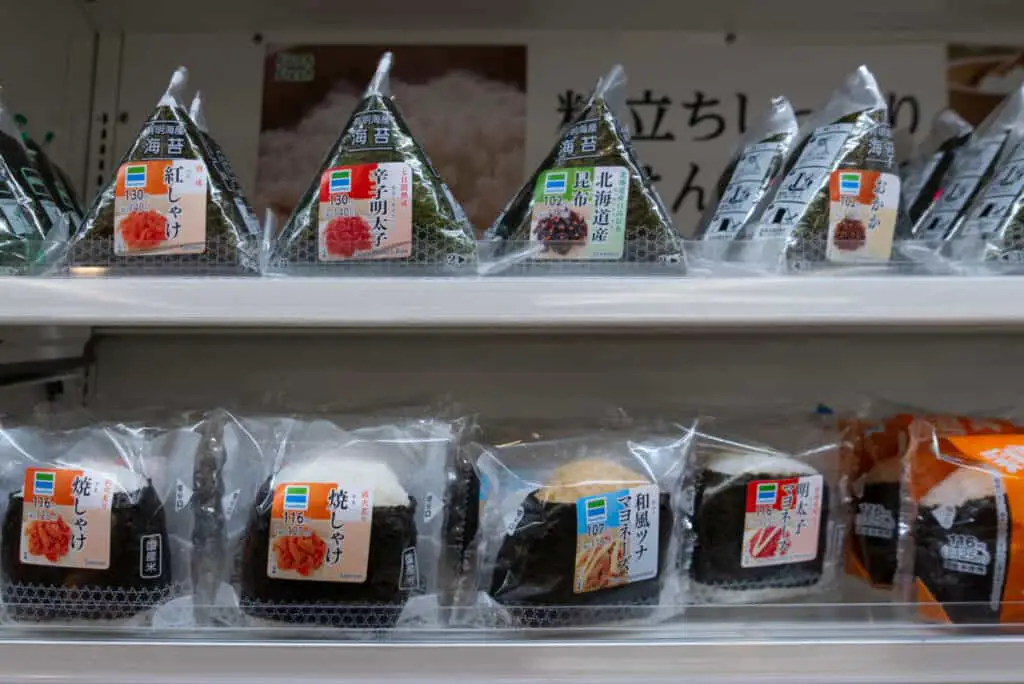
Onigiri takes no longer than half an hour to make. Beginners can master this iconic part of Japanese cuisine within just a few minutes. Since the stuffing is completely preferential, it takes only as long as you want to prepare it.
What is Onigiri?
Onigiri or rice ball is a Japanese food or hand-sized snack made from white rice shaped into triangular or cylindrical forms and covered in nori or seaweed. As a natural preservative, onigiri is traditionally filled with pickled ume, salted salmon, katsuobushi, kombu, tarako, mentaiko, takanazuke, or any other salty or sour ingredient.
Onigiri is a portable, easy-to-eat hand-sized molded rice made using sticky rice and seaweed. There are a variety of fillings that you may place inside onigiri, like tuna, vegetables, and more.
This triangular food is easy to eat, which makes it a great portable snack. Inside is a delicious mix of fresh fish and vegetables. Nori seaweed wraps around the rice, either partially or fully, to act as a napkin as you eat.
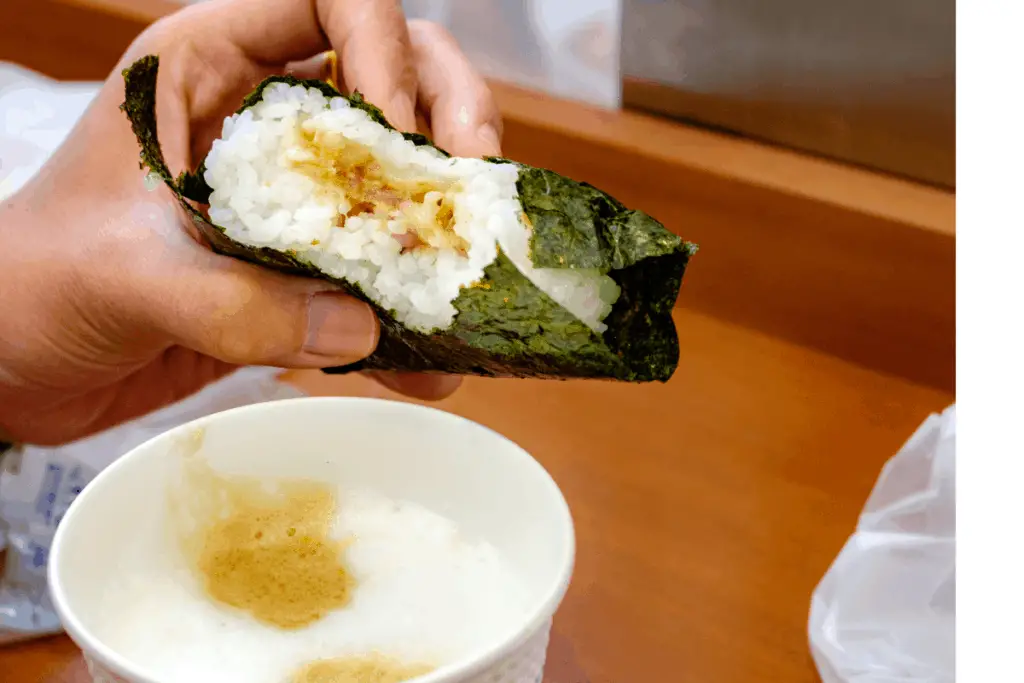
You can add anything ingredient inside your onigiri that you wish. Generally, the most popular ingredient is a fish of some type like tuna or salmon. Japanese rice balls are also known for being stuffed with delicious fruit filling. Commonly onigiri has sour plum paste inside as well.
How Do You Make Onigiri?
Making onigiri is a hands-on process that requires compacting a filling inside freshly steamed rice then wrapping it in dried seaweed. Onigiri is a straightforward dish that can be ready to serve in less than thirty minutes!
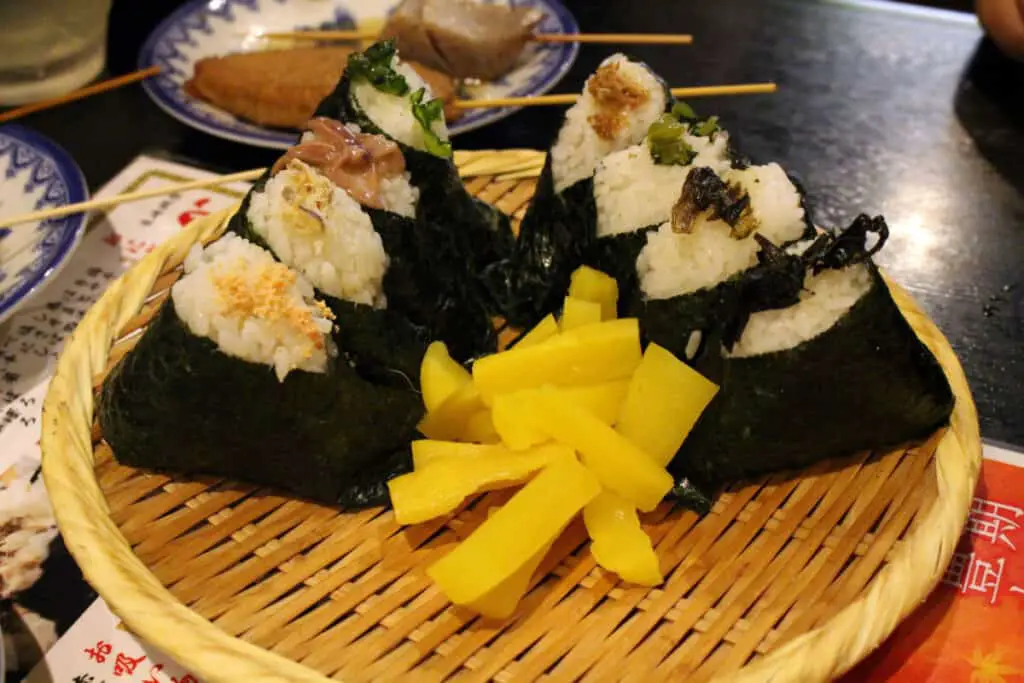
Ingredients required to make onigiri include:
- Sushi rice
- Your choice of stuffing (fresh fish, veggies, fruit, etc.)
- A bowl of freshwater
- Salt
- Nori seaweed wraps
- Sushi vinegar
- Furikake
- Sour plum paste
Working with onigiri can become messy. Have a napkin ready, and be prepared to get your hands dirty. The messiness and general hands-on activity of this process make creating Japanese rice balls is a fantastic family activity.
Steaming or Boiling Rice
Before making your onigiri, steam your sushi rice. Steaming rice guarantees it forms nicely without becoming sticky. Onigiri requires its rice to form a solid triangular shape. However, it cannot become mushy or sticky when you bite it.
Sushi rice is the best option for making onigiri because of its formability. Creating Japanese rice balls requires manipulatable rice, and sushi rice is a good example of that. This rice takes on shapes nicely.
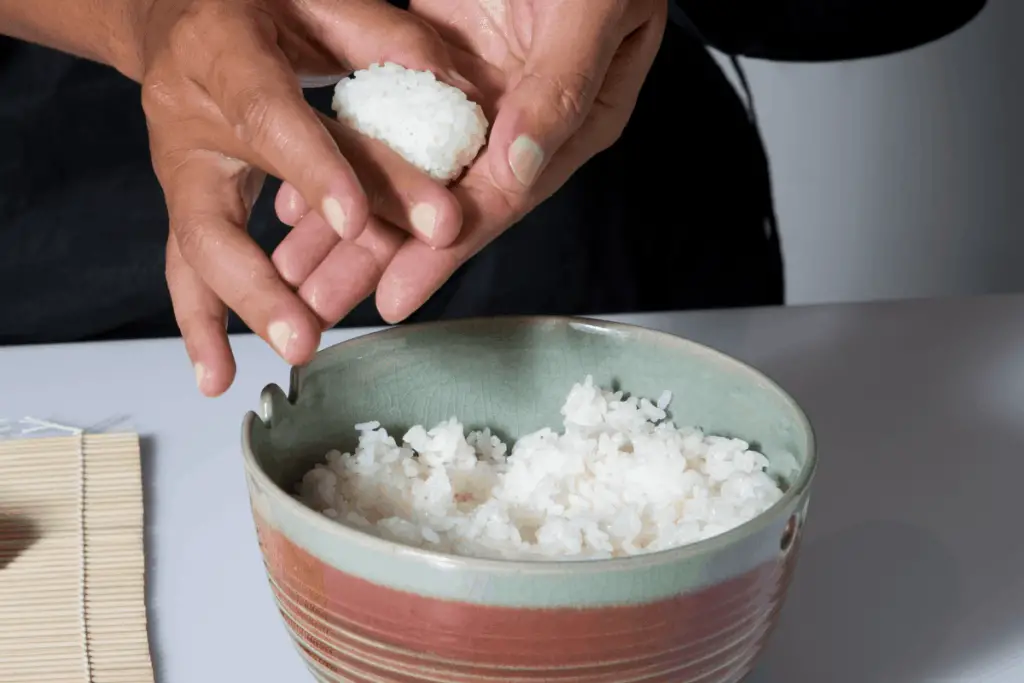
After boiling your rice, place it in a bowl and mix in furikake. Furikake is a special sushi rice seasoning that provides an assortment of flavors. Primary flavors include vinegar, sugar, and dried bonito flakes.
Mixing the Stuffing
There are many possibilities for what people can use as stuffing. Fish and tuna are accurate representations of stuffing. Since these are the most common fillings, many people automatically think of fish when they hear onigiri. However, there are many sweet stuffings too, like strawberry jelly and even chocolate.
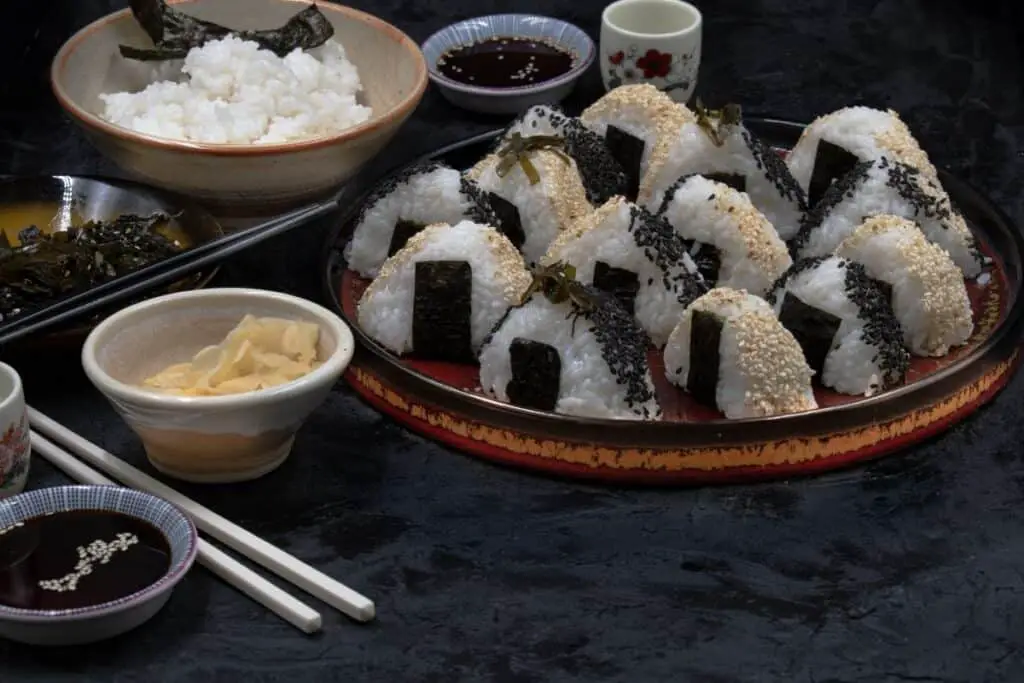
The options for the stuffing are endless. Depending on the type of onigiri, the type of stuffing will be different. For instance, breakfast stuffing may contain a nutritious protein to start the day. A snack at lunch might be a sweet, fruity surprise. No matter what, rice balls are a delicious and simple way to celebrate Japanese cuisine.
Mixing the stuffing for your onigiri can be done while you steam your rice if you can multi-task.
Forming Shape
The triangular shape of the onigiri is an important part of the process because it represents mountains. To guarantee you get a solid form, keep your hands wet while you press your rice together.
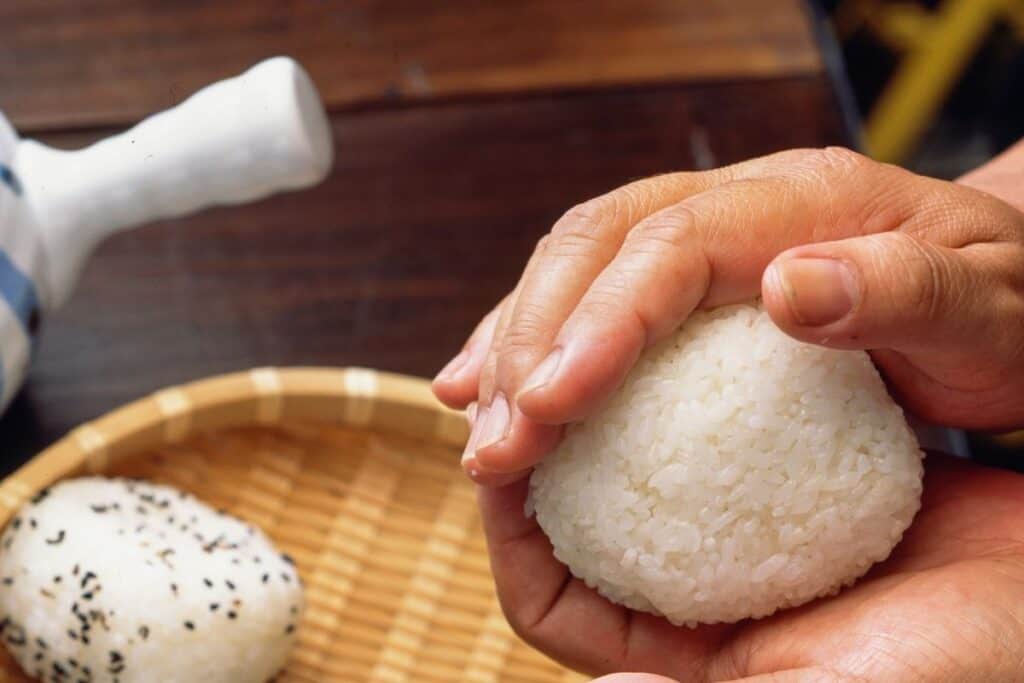
Keeping your hands wet might be one of the most important parts of shape forming. Wetting your hands prevent the rice from sticking together as you press it together. When pressing, be cautious with the amount of pressure you give when forming your onigiri. Too much pressure can cause the rice to fall apart.
Stuffing
Perhaps the most important part of all is the stuffing you put into your Japanese rice balls. The mixture you prepare varies based on preference. Getting the stuffing inside your rice mold is critical.
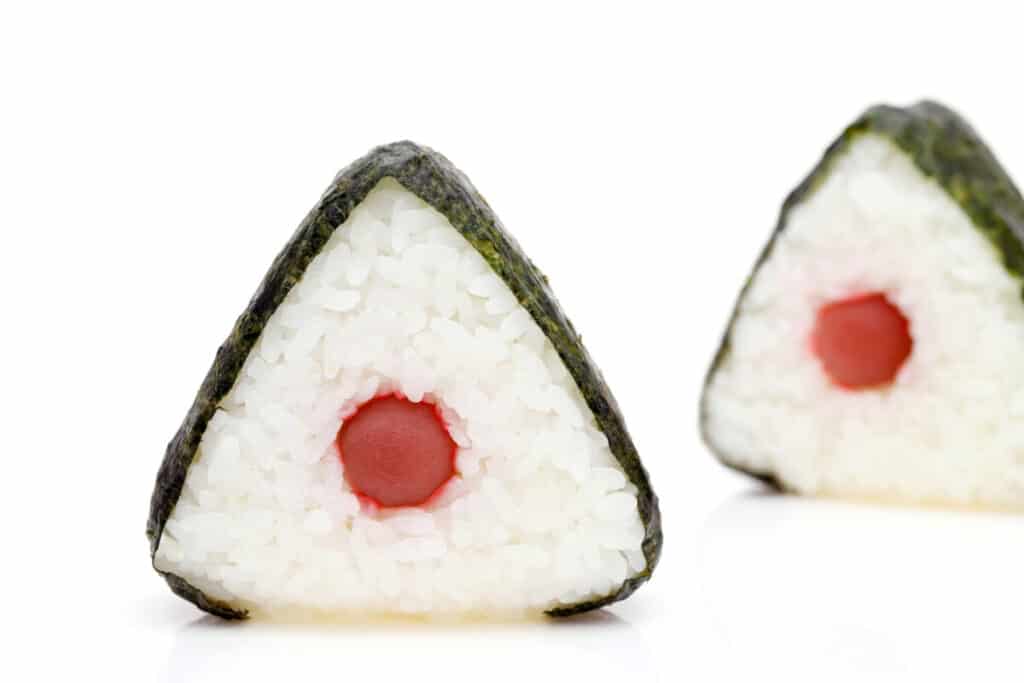
When molding your rice balls, make an indent in the rice large enough to hold your stuffing, fill your rice ball, and then fold the rice on top.
Wrapping Onigiri
Not all Japanese rice balls will get wrapped in seaweed. If you choose not to wrap your onigiri, skip this section and move to the serving stage. Otherwise, get your seaweed.
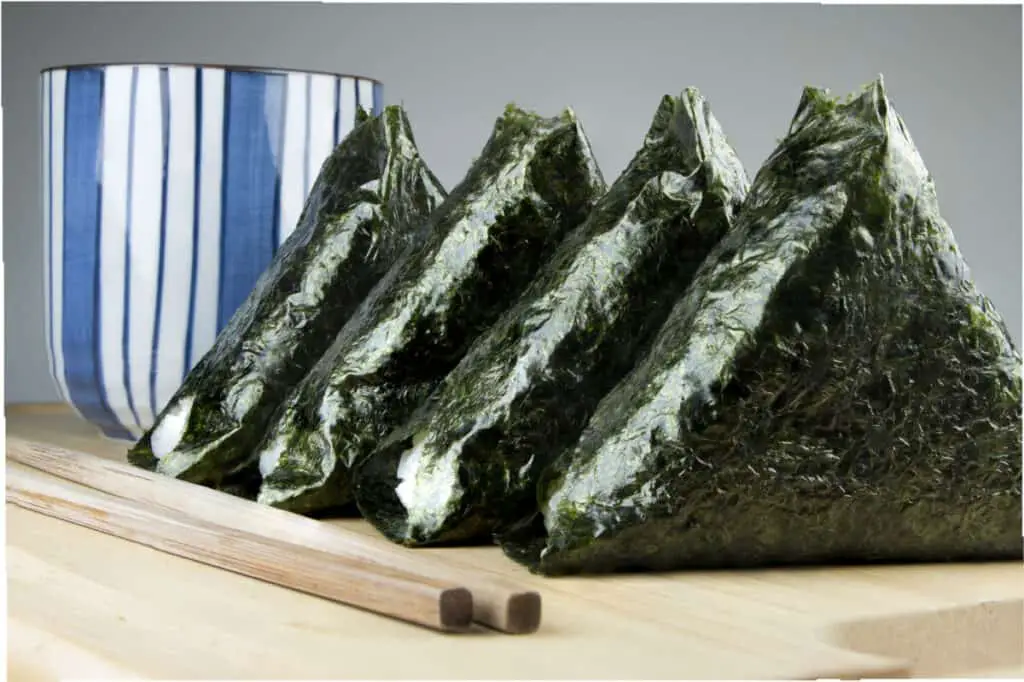
Seaweed acts as an envelope to seal the components together. The seaweed’s envelope-like role also acts as a plate, perfect for portable eating.
Serving Onigiri
The portable stuffed rice snack, onigiri, does not require utensils or plates to eat. All you need are your own two hands to enjoy this portable rice snack. There are several ways that you may physically serve onigiri. Onigiri goes great with Japanese beer or sake.
The way you wrap seaweed makes a significant impact on how your onigiri comes across. For instance, some people say that traditional triangular-shaped designs with a singular seaweed strip are representative of the gorgeous Japanese mountains like Mount Fuji.
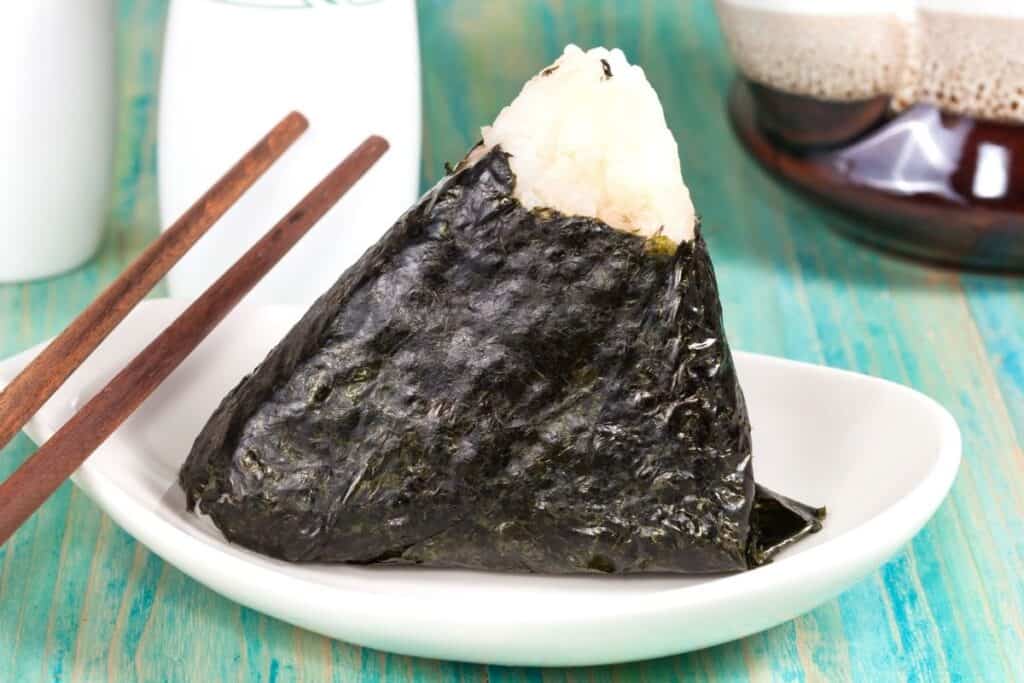
What Types of Onigiri Can You Make?
Onigiri is a delicious rice snack that can come in many forms, and the opportunities are ultimately endless. Innovative chefs are using their imagination to create new, inspiring onigiri recipes each day.
Japanese rice balls come in many different sweet and savory recipes. Essentially, if you can imagine the recipe, you can bring it to life by wrapping it in rice and seaweed.
Making homemade Japanese rice balls is a simple and exciting experience that any food lover can appreciate. Onigiri is a portable snack that you can eat without getting your hands dirty.
Let your imagination run wild when creating your onigiri. As you adventure more into the culinary experiences of Japan, explore your taste palette and try different flavors. Consider your snack’s shape and size, which contributes to its purpose in the spiritual realm.
When people think of Japanese rice balls, their first thought initially drifts to tuna and spicy mayonnaise. There are so many non-savory recipes that cater to the sweet palette. Sweet recipes mostly include fruity and sugary fillings with chocolate or sugar-crusted layers.
